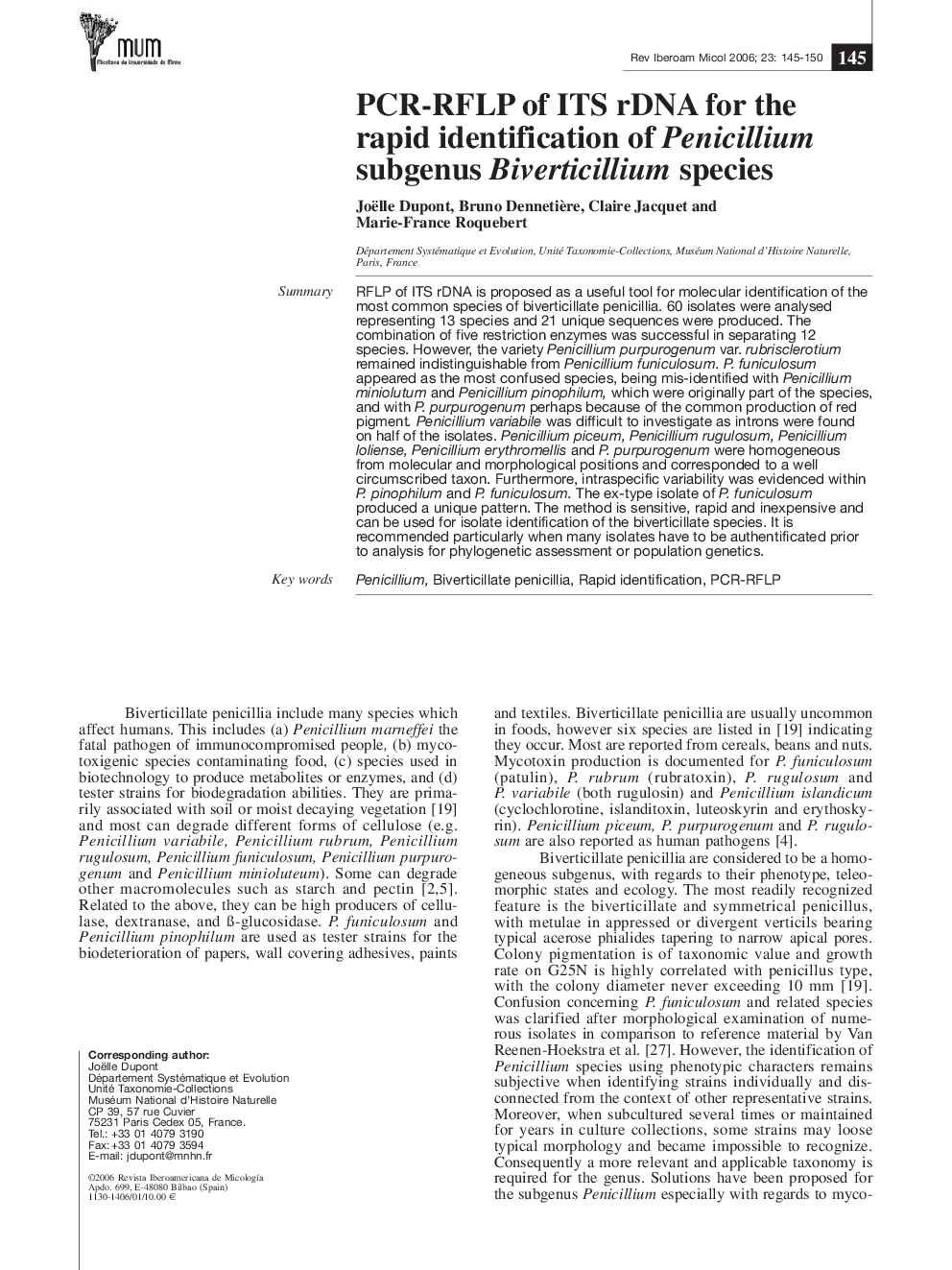| Article ID | Journal | Published Year | Pages | File Type |
|---|---|---|---|---|
| 3419268 | Revista Iberoamericana de Micología | 2006 | 6 Pages |
Abstract
RFLP of ITS rDNA is proposed as a useful tool for molecular identification of the most common species of biverticillate penicillia. 60 isolates were analysed representing 13 species and 21 unique sequences were produced. The combination of five restriction enzymes was successful in separating 12 species. However, the variety Penicillium purpurogenum var. rubrisclerotium remained indistinguishable from Penicillium funiculosum. P. funiculosum appeared as the most confused species, being mis-identified with Penicillium miniolutum and Penicillium pinophilum, which were originally part of the species, and with P. purpurogenum perhaps because of the common production of red pigment. Penicillium variabile was difficult to investigate as introns were found on half of the isolates. Penicillium piceum, Penicillium rugulosum, Penicillium loliense, Penicillium erythromellis and P. purpurogenum were homogeneous from molecular and morphological positions and corresponded to a wellcircumscribed taxon. Furthermore, intraspecific variability was evidenced within P. pinophilum and P. funiculosum. The ex-type isolate of P. funiculosum produced a unique pattern. The method is sensitive, rapid and inexpensive and can be used for isolate identification of the biverticillate species. It is recommended particularly when many isolates have to be authentificated prior to analysis for phylogenetic assessment or population genetics.
Related Topics
Life Sciences
Immunology and Microbiology
Microbiology
Authors
Joëlle Dupont, Bruno Dennetière, Claire Jacquet, Marie-France Roquebert,
